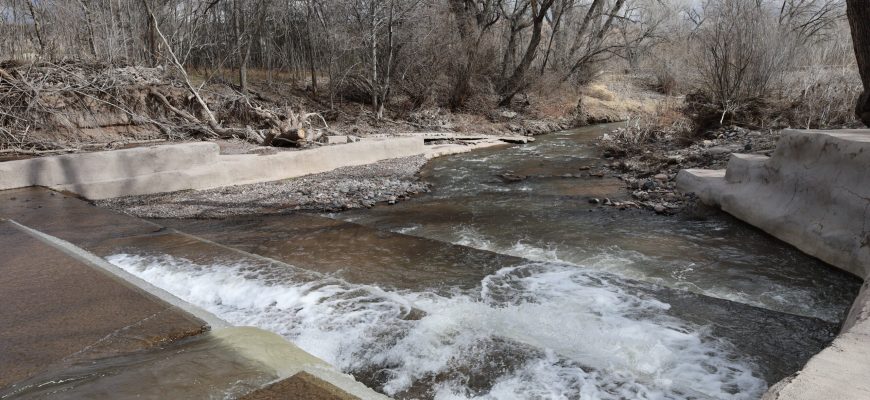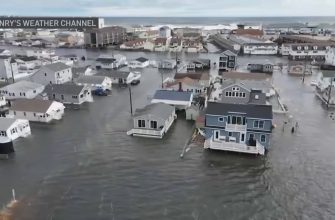A U.S. Supreme Court ruling changed water law overnight last week – and the impacts will ripple through New Mexico over coming months.
New Mexico’s complicated water landscape, coupled with the fact it’s one of three states that does not have a state agency regulate pollution in surface water, leaves it uniquely vulnerable, officials for the New Mexico Environment Department said.
The case
In their 9-0 decision in a case called Sackett vs. EPA the court ruled the federal government overreached in the case of Idaho couple Chantell and Michael Sackett. The court said the wetlands on their property were not classified as “waters of the United States,” and multiple rounds of permitting in order to infill and build a house on that land.
Recent History
The fight over Waters of the United States boiled over between the Obama and Trump administrations. In 2015, the EPA released a rule that included ephemeral streams and ponds in the scope of the law. However, under the next administration in 2019, the EPA repealed its former rule dramatically weakened the federal government’s water pollution authority. Both laws were at the center of multiple lawsuits.
Under President Joe Biden, a new 2022 rule was released in March 2023. It reversed the Trump-era changes and brought more land back under the EPA’s oversight but didn’t reach as far as the 2015 rule.
“Waters of the United States,” legal designation for the waters protected in 1972 Clean Water Act, which allows the federal government to limit pollutants such as livestock waste and industrial discharge and construction runoff.
The opinion limits the definition of what wetlands would be protected alongside “navigable waters,” defined in other cases as “relatively permanent, standing or continuously flowing bodies” – likes streams, oceans rivers and lakes.
“These wetlands must qualify as “waters of the United States” in their own right,” Justice Samuel Alito wrote for the majority opinion. “In other words, they must be indistinguishably part of a body of water that itself constitutes “waters” under the [Clean Water Act].”
While all the justices concurred with the judgment – to send the case back to lower courts for further proceedings in the Sacketts’ favor – Justice Brett Kavanaugh, joined by four other justices disagreed with the majority narrowing the definition from “adjacent” wetlands to “adjoining” wetlands.
New Mexico’s vulnerabilities
That distinction leaves New Mexico – and other parts of the arid Southwest – high and dry, said Tannis Fox, an environmental attorney for conservation nonprofit Western Environmental Law Center.
Fox said the rules limiting how much and what type of pollution from wastewater plants, construction sites and agriculture will still protect the state’s largest rivers but can’t say the same for tributaries.
“There are waters, same with wetlands within the entirety of a watershed, that are now at risk of not being protected under the Clean Water Act,” she said. “If there were a point source discharge into that body of water, you may not have to get a permit.”
The New Mexico Environment Department estimated that 93% of New Mexico’s streams and rivers are intermittent – seasonal rivers for example – or ephemeral – only running when there’s heavy rain, in a comment to the EPA in 2019.
These include “localized monsoonal downpours, ephemeral arroyos, cienegas, effluent-dependent streams, playa lakes, and other man-made reservoirs, waterways,” and canals.

Fox said this raises the question for existing permits on pollution, and future permitting landscape. The U.S. Environmental Protection Agency directly administers pollution programs for New Mexico, Massachusetts and New Hampshire.
NM Constitution on Waters of the State
The state’s constitution lays out that “The unappropriated water of every natural stream, perennial or torrential, within the state of New Mexico, is hereby declared to belong to the public and to be subject to appropriation for beneficial use, in accordance with the laws of the state.”
Currently, the agency reviews EPA permit applications, and “certifies” them based on if they meet state water quality standards.
Environment Protection Agency Region 6 officials – which oversees New Mexico, Texas, Oklahoma Arkansas and Louisiana – declined an interview or comment.
In a written statement, EPA Administrator Michael Regan, said he was disappointed by the decision, saying it “erodes longstanding clean water protections.” He said the agency will review the decision, “and consider next steps,” but did not elaborate further.
Fox said New Mexico’s broad definition of waters of the state enshrined in the state’s constitution offers some protection beyond the federal definition, but it’s hard to enforce without a state permitting program.
“The immediacy of the need for a surface water program dramatically changed between today and yesterday,” Fox said.
Where is the state in getting a permitting program?
Since the court limited the federal scope, state officials said they anticipate more litigation to determine which waters will be protected, slowing down efforts to develop its own permitting program.
Gallup and NM Environment Department compromise on water safety standards instead of legal fight
New Mexico Environment Department Secretary James Kenney said the science, technical and legal staff may have their hands full if permits are terminated prematurely.
“Because we may very well disagree that while not a “water of the U.S.,” we still have waters of the state to protect,” he said.
Kenney said the agency plans to bring rules for the program by December 2025, based on current funding and staff.
There’s several layers of red tape to get there, though.
The agency has to draft a resolution to be passed by the state legislature, seek input from New Mexicans and tribes, bring rules to it’s pollution authority board for passage, and get EPA approval after the statute passes.
Currently, the agency is funded for outreach in 2023.
Kenney said the ruling should be a “wake-up call” for lawmakers.
“Right now, we have $680,000 and a special appropriation to carry us through fiscal year 24. Maybe, maybe that increases so that we can get something done sooner,” he said, adding that there would probably be a presentation during the interim session.
As far back as 2019, the agency has testified that if the Clean Water Act no longer applies, more strict state and federal laws governing hazardous waste may apply. Kenney said he understands that for permit holders, this is a “nonstarter,” as hazardous waste laws have more restrictions and culpability.
Kenney warned that individuals and entities should think twice before petitioning to remove the permit and failing to include the state agency in that discussion.
“I will have no sympathy with respect to what transpires as a result of that, whether that’s protracted litigation, or robust enforcement for failing to include us in that discussion,” he said.
By the numbers
As of April, there were 3,955 permittees, according to NMED. There were 121 individual dischargers, for example Los Alamos National Laboratory. There are 23 feedlots. The majority, 3,600, are stormwater discharge permits.








